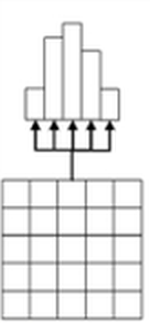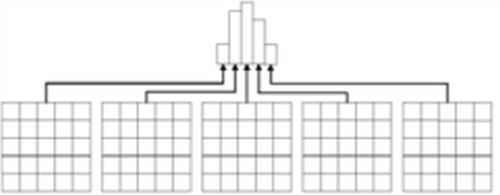Just like the transport supply and the assignment, any demand has a time reference.
In statistic PrT assignments, the demand automatically refers to the analysis period. The demand time series allocated to the demand segment and the start time are irrelevant here.
This is different in the dynamic PrT assignments (DUE and Dynamic Stochastic assignment) and the headway-based and timetable-based assignment in PuT. Demand matrices do not have an explicit time reference here, but are described by a start time and a time series.
|
Note: A time series must be allocated to the demand segments in order to calculate an assignment with these procedures. |
The start time specifies the time and – if the weekly or annual calendar is used - the day on which the period referred to by the demand in the matrix starts. The end of the period is calculated from the length of the assigned time series.
In Visum, there are two different ways to define so-called standard time series:
- For time series as percentages a weight is specified for each time interval. It specifies which share of the total demand accounts for the respective time interval. If a time series as percentages is used for a demand segment, a demand matrix must also be specified, whose demand is distributed temporarily with the specified weights. This matrix must contain the number of travel demands in the time period, defined by the starting time and the length of the time series.

Illustration 35: Time series by percentage
- However, for time series of matrix numbers for each time interval a separate demand matrix is specified. It contains the travel demands of this time interval only.

Illustration 36: Time series of matrix numbers
|
Note: When using time series of matrix numbers, it is possible to specify a value for the demand for each OD relation and time interval. This way, asymmetric changes of the demand (load direction) can be illustrated. For time series as percentages however, the same factor applies to each OD relation per time interval. |
Time series of matrix numbers require a full matrix for each time interval, which must be generated and also saved. In order to save the effort and still be able to model a certain load direction in the demand, Visum provides demand time series as a compromise. These are generated on the basis of a standard time series, whereas a different standard time series can be specified for each pair of zone types. In this way, it is possible to specify deviating time series for selected pairs of origin and destination zones with known structural features (for example purely residential or commercial areas).
For each demand segment, either a fixed demand matrix together with a time series as percentages is specified, or a demand time series which itself is a time series of matrices. Moreover, a start day and the start time per demand segment must be specified.
|
Note: The start time shifts the time intervals of the time series since it is specified relative to this start time point. If the time series defines an interval A from 0 am to 1 am and an interval B from 1 am to 2 am, and the start time is set to day 2 at 2 pm, the share of the demand defined in interval A will arise on day 2 from 2 pm to 3pm, and the share of interval B on day 2 from 3 pm to 4 pm. Outside of these times, for example on the first day of the calendar, there is no demand. |

